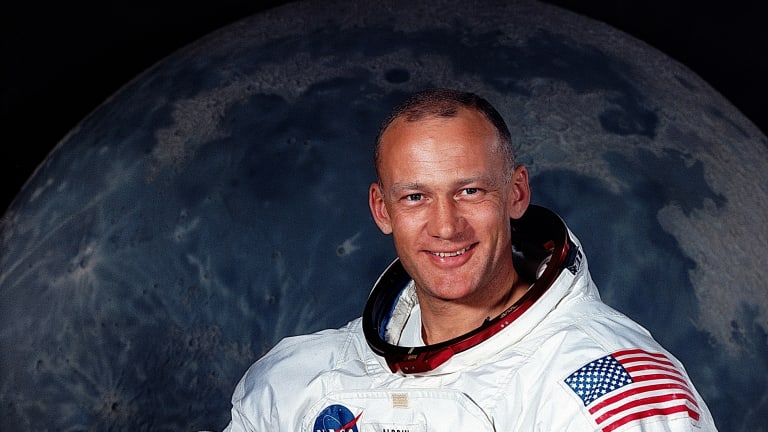
In 1969, astronaut Buzz Aldrin became the second human to walk on the moon. He was part of the Apollo lunar landings, which many consider to be one of the crowning achievements of human ingenuity. Years before leaving earth, Aldrin began his career in the U.S. Air Force. He was a jet fighter pilot during the Korean War, responsible for flying 66 combat missions. As a pilot, he shot down two MIG 15 aircrafts, earning him the honor of a Distinguished Flying Cross.
Since retiring from the military and NASA, Aldrin has continued to advocate for space exploration, particularly a human mission to Mars. He has been honored with some of the nation's top awards, including the Presidential Medal of Freedom, NASA’s Distinguished Service Medal, and the Congressional Gold Medal, which is the nation's highest civilian honor. In addition, Aldrin has authored nine books and released his NY Times bestseller No Dream Is Too High: Life Lessons From a Man Who Walked on the Moon in 2016.
After his time flying in Korea, Aldrin's decision to continue his graduate studies at the Massachusetts Institute of Technology (MIT) would prove to be a pivotal moment in his life. Although he'd previously turned down a full undergraduate scholarship from MIT (choosing instead to attend West Point) Aldrin showed up on campus in 1959, already a decorated war hero. He enjoyed his classwork in astronautics at MIT and wrote about groundbreaking methods for spacecraft to come close enough to see each other, or even ‘dock.’ In fact, the methods he wrote about are still used for docking in space today. Following the completion of his 311-page thesis "Line-of-Sight Guidance Techniques for Manned Orbital Rendezvous," Aldrin received his Doctor of Science degree in astronautics in 1963. Three years later, he would be putting his MIT theories into practice on the Gemini 12 mission, gaining him the nickname ‘Dr. Rendezvous.’
As a pioneer in space travel, Aldrin has always appreciated the guiding influence of his alma mater. This explains why Aldrin has returned to MIT so many times over the years. For instance, in 2009 he returned to celebrate the 40th anniversary of the Apollo lunar landings and MIT's crucial role in them. Later in 2014, he also came back to help celebrate the 100-year birthday of MIT's AeroAstro program, the oldest and most respected university aerospace program in the country. In addition, Aldrin frequently contributes to the MIT community by taking part in lectures and panel events with other leading experts in the space exploration field. In 1999, for example, he returned to his alma mater for a conference to present his vision for the future of space travel and planetary colonization.
The following year, Aldrin also returned to speak about his experience in space exploration and to describe his new book, The Return. During the public event, Aldrin said he was thrilled to be back at MIT, where he truly launched his career as an astronaut.
